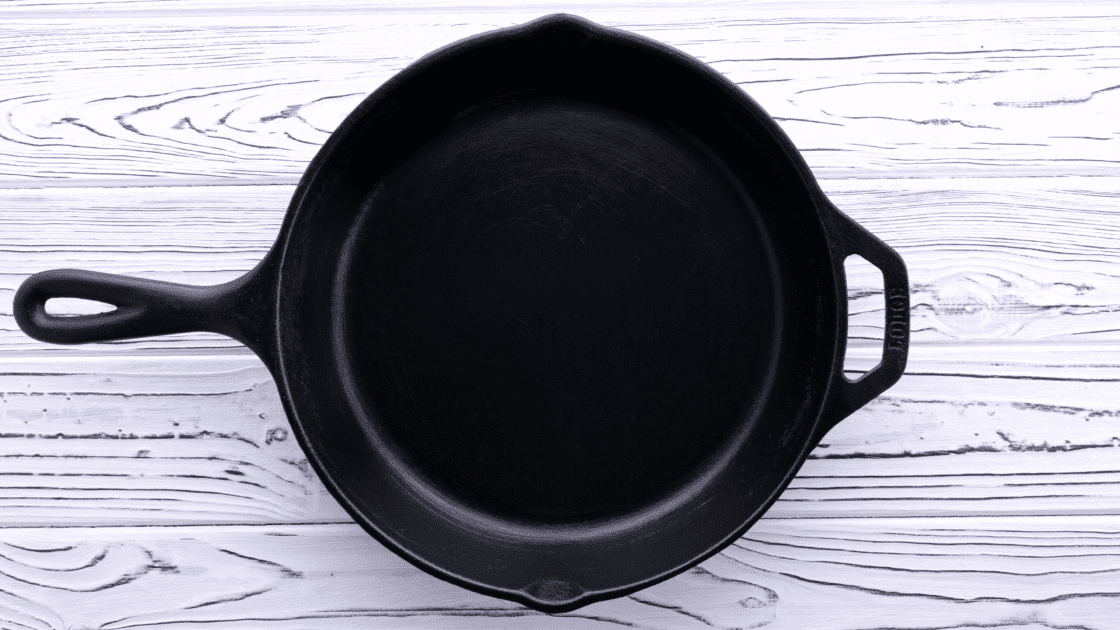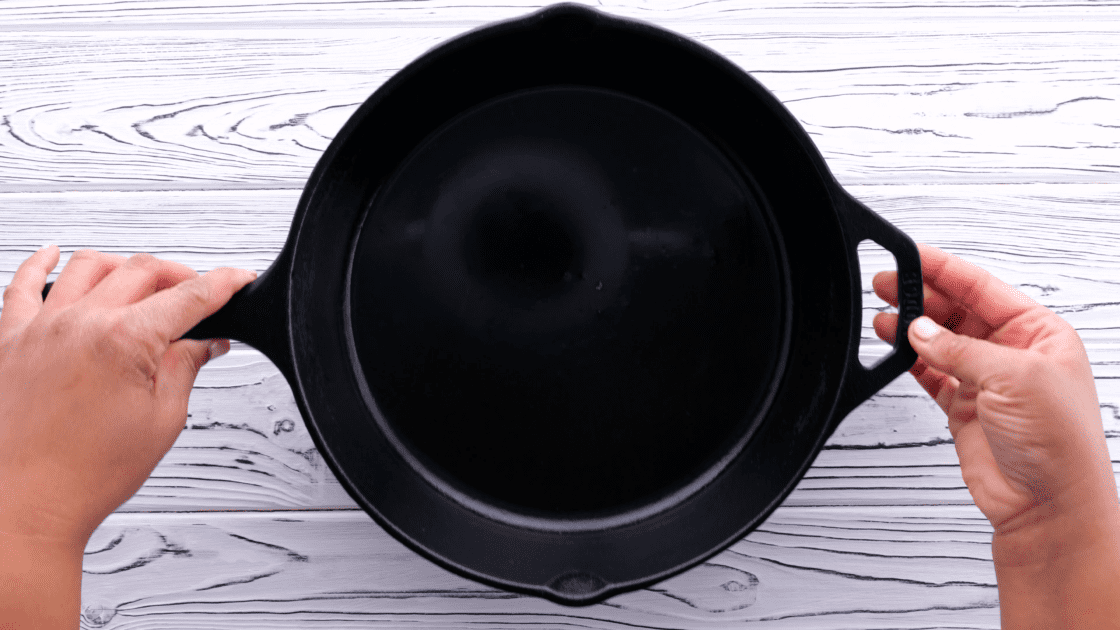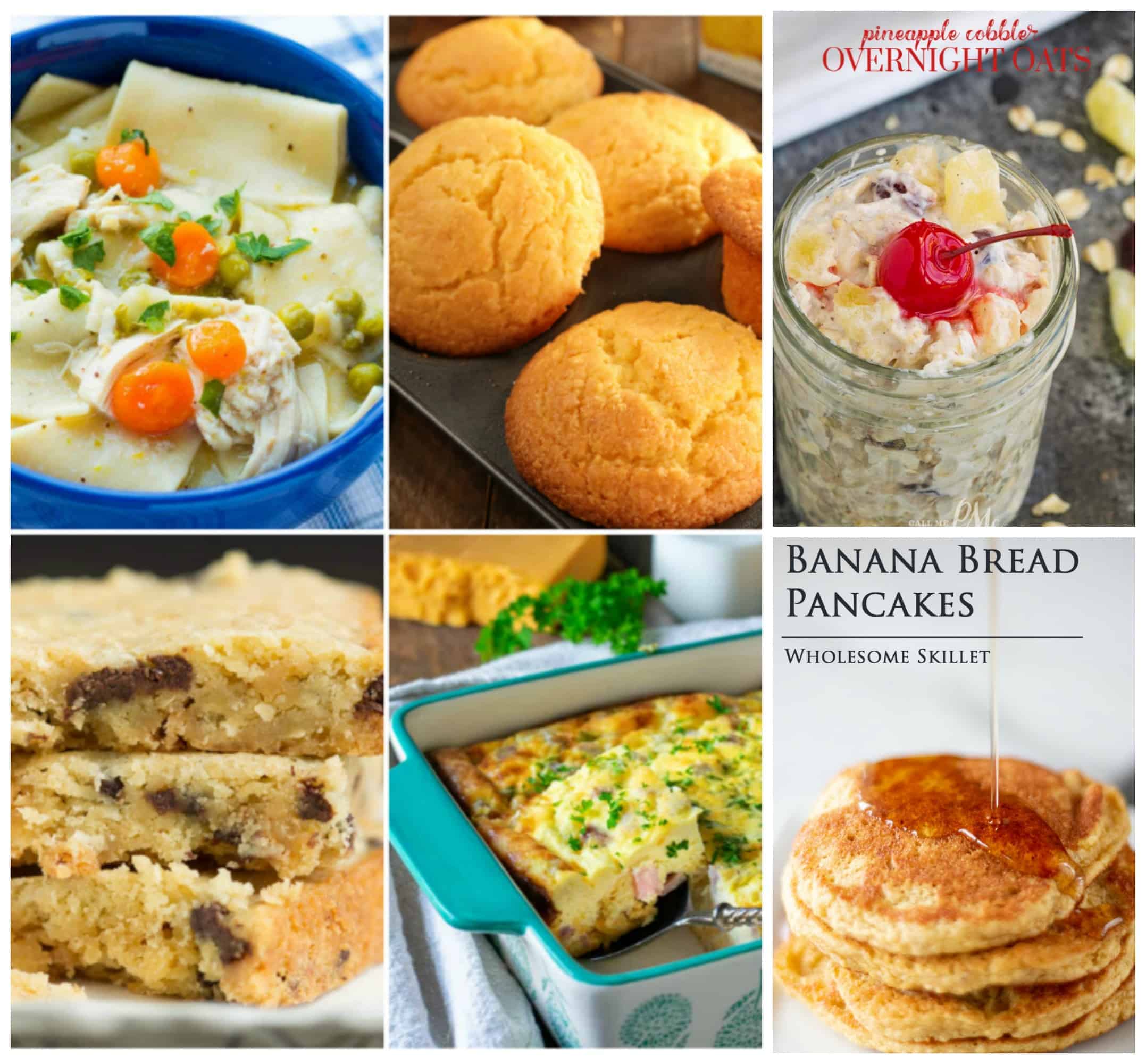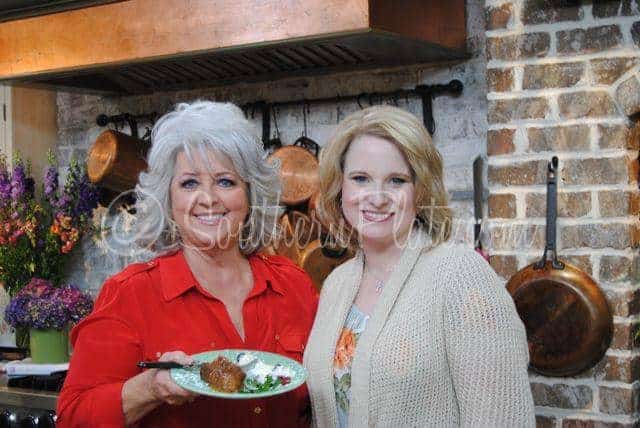How To Season A Cast Iron Skillet
Today I am thrilled to bring you a guest blogger who will be speaking on a topic we all need to know about – how to season a cast iron skillet the right way. As a Mechanical Design Engineer, Richard Hall may seem an unlikely choice for a food blogger, but his heritage, common-sense know-how, and generosity in sharing his knowledge with us make him the perfect choice for a topic of the utmost importance to any Southern cook! Thank you, Rich!
Hey all,
It is a pleasure to blog on Southern Plate. Just as Christy has written about her Southern heritage, mine is similar. Both sets of my grandparents were sharecroppers in Southern Tennessee and North Alabama. I grew up eating fresh Southern food out of the garden and barnyard.
Since Christy has all these great Southern recipes, I thought it might be useful to share how to season a cast iron skillet or other types of cast iron cookware. You may ask, what is seasoning and why do I need to season my cast iron skillet? The answer is very simple. Seasoning makes it non-stick like all the new miracle cookware. And the why is you can buy and maintain a non-stick skillet with nothing more than vegetable oil and shortening and common sense and it will never wear out. The cast iron skillet can be used to cook on the stovetop, the oven, or the grill. A good iron skillet can be passed down as an heirloom if taken care of properly.
What You Need to Season a Cast Iron Skillet
It is very simple to do albeit a little messy. What you will need is:
- The cast iron skillet
- A box of vegetable shortening, which can be purchased in your favorite supermarket for less than $2.
- A roll of heavy paper towels
- Your oven
Just a quick note, the seasoning of a new skillet and the re-seasoning of an are the same except for the first step. So let’s get started.
How to Season a Cast Iron Skillet
Wash new skillets before seasoning
Make sure your new has been washed in hot water and mild dish soap. This will remove the factory anti-rust coating. For re-seasoning an existing skillet, just make sure to wipe the entire surface with hot water and a clean washcloth or a paper towel (sponges need not apply). Dry the skillet by heating it on the cooktop then let it rest and cool. Preheat your oven to 200 degrees.
Season with vegetable shortening or oil
Fold the paper towel into a fourth and place a dollop of vegetable shortening in the skillet. The size is not important, but for a 10” skillet, use about 1/4 of a cup. More can be added as required to cover.
Instead of lard or vegetable shortening, use any kind of vegetable oil. I recommend refined coconut oil as it has a higher smoke point.
Take the paper towel and coat the interior, the exterior down to the bottom edge, and the handle liberally.
I don’t coat the very bottom of the skillet, as any cooking surface that it touches will make smoke and just burn off the shortening or oil.
Place the skillet in the oven
Once you have the skillet coated, place it in the oven (at 200 degrees) and set a timer for 3 hours. This low temp will open the cast iron pores up and allow the vegetable shortening to penetrate as it liquefies.
Remove from the oven
After the time is up, cut off the oven and let the skillet cool. Once it is cool enough to touch, wipe it down with another paper towel to remove any or vegetable shortening and just leave a on the surfaces.
In another hour or so, wipe it down again.
After this final wipe, the skillet will continue to cool and in about an hour will look like the last picture.
Using Your Cast Iron Skillet
Now you are ready to use the skillet. For the first couple of uses, cook something greasy like bacon or sausage. This will help heat cycle and re-coat the interior surface which will make the non-stick coating better. Also, be aware that it is going to smoke for the first couple of uses as it heat cycles and burns off the water trapped in the pores and the excess vegetable shortening.
To maintain the skillet you will need to wipe the interior every couple of months with bacon grease during a heat cycle or cook something greasy and re-season about every 2 years following the process above.
Also, don’t let food sit in the skillet as this will remove the seasoning.
After each use, wash the skillet out using a very mild soap solution and warm water. NEVER wash in the dishwasher. The reason for using mild soap solution is to keep from removing the seasoning layer.
One other note that I personally do is the drying step after a wash. I will turn the cooktop on to high heat and place the wet skillet on it for about a minute. This will heat the skillet up enough to dry the water and heat cycle the pores. This keeps everything as it should be.
If you choose, you can render your own lard from bacon drippings. If you own a microwave bacon-cooking tray it is very easy. Just cook some bacon and let the drippings cool either in the tray or pour them into a bowl or shallow dish while still hot. Once it has cooled and congealed, you can use it just like the vegetable shortening as described above. This is perfect for the occasional re-seasoning of your skillet.
I hope this has been helpful and if you have any questions just direct them to Southernplate.com and I’m sure Christy can find me to get the answers.
See you ’round,
Rich
P.S. From Christy. This post would not be complete without me sharing one of my all-time favorite Southern Plate comments with y’all! Special thanks to Bill Gent for this sweet, horrifying, and hilarious memory!
When I was about 7 or 8 I saw those dirty old skillets and decided I would clean them both really good with SOS pads. My mama would be so proud that I got off all that old black stuff and make-em shiny. I took them outside and used the garden hose since I didn’t wanna make a mess inside. Then I proudly took them to her when I was finished and proclaimed my good deed. I heard a gasp. She calmly said..”Why thank you, honey.. but.. uhh..” I don’t know why I remember it.. maybe it was that horrified gasp that burned it into my memory. ~ Bill Gent















I came back to this site because my dutch oven had not been used for a few years and needed re-seasoning. I read every post. Lot of good info.
My two Griswold skillets are at least 100 years old. I use them nearly everyday for breakfast. My wedge pan was a challenge to make perfect cornbread. Finally got ‘er done.
Update: My Iron skillets came out wonderful! I have been using them nearly everyday, cooking every thing from corn bread to frying eggs and nothing sticks! Thank you so much for this site.
I found a nice Country Morning™ Cast Iron Stovetop Griddle at http://www.bakingandcookware.com/catalog/item/8654673/9588898.htm
It is already preseasoned and long enough to fit accross two burners. They had a sale and I had to get it! I am glad that I did! I have several other cast iron cookwares from my grandma and they also are great but want to have a large griddle.
My dad gave me 2 of my mother’s iron skillets and they where in need of being “burnt off”. After much reading on this site and others I decided to put mine on my grill outside. I must say it worked wonderfully! I ran some steel wool over them to remove the rust and rinsed in hot water. Following the directions on this site they are now in the oven. I can’t wait to see how they turn out. I will post the outcome. Thank you so much for all the information.
I hope they turn out great for you Lynn. There is nothing like preserving such wonderful treasures that were once your mothers.
I needed to season an old skillet that had kinda gotten misplaced. I knew this was the place to look. Thanks Christy
I was wondering if anyone has used their cast iron skillets on a glass top range? A friend of mine used her old Calphelon pans (the bottoms had a build up on them) and her range top got baked on circles that could not be removed. The mfg. rep told her it was from the bottoms of the old pans. Since seasoned cast iron skillets have baked on grease on the bottoms will that transfer to the glass top?
I could use some help. I have two cast iron skillets that I got from my mother. She got them from her mother. One is a Griswold 704 Erie, PA 8″ skillet. The insides have been very well taken care off, but the outside has built up a layer of built up crud. I can’t scrub it off, even with steel wool. I think it’s just layers of built up oil and grease. Is there any way to get it off. The skillets still cook perfectly and I love them. Any suggestions would be appreciated. Thanks
Val,
I recently acquired my mothers iron skillets that had layers of built up crud. I placed mine upside down in my gas grill at the highest setting to burn them off. It took about 2 hours, I checked them about every 30 minutes. Once they were smooth and cooled I reseasoned them according to the directions on this site. I hope this helps.